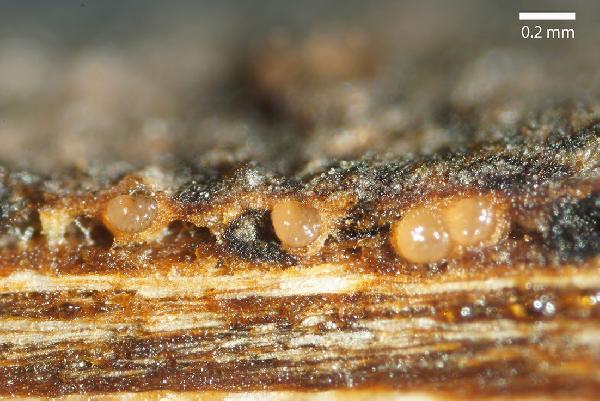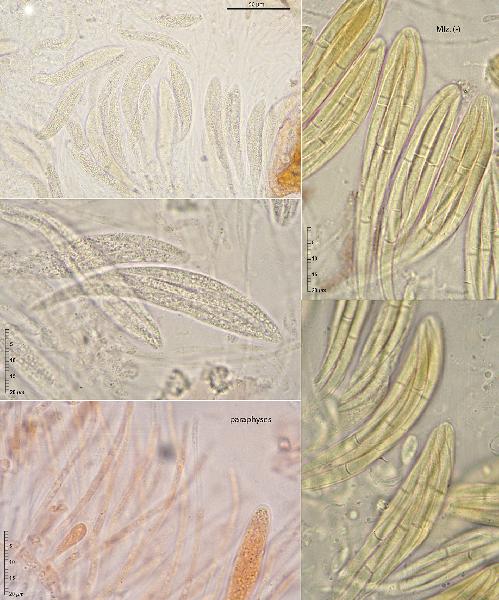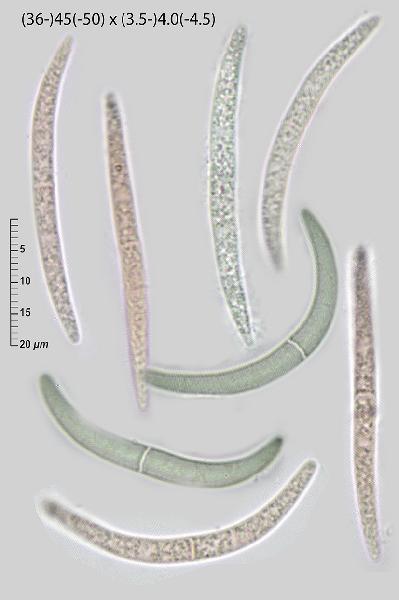Leptosillia slaptonensis (P.F. Cannon) Voglmayr, M.B. Aguirre & Jaklitsch
in Voglmayr & al., Persoonia, 42: 253, 2019. Basionym: Zignoella slaptonensis P.F. Cannon - Syst. Ascom., 15, 1-2: 129, 1997.
Synonyms: Cresporhaphis ulmi Calat. & Aguirre
Distribution:
Description: Thallus inapparent, not lichenized. Perithecia, black, glossy, partly immersed to superficial, circular in outline, (1.15-)1.5-2(-2.5) mm across, scattered to occasionally confluent, pyriform, often laterally collapsed, the ostiole located in a central papilla. Exciple c. 25-30 μm thick, of thin-walled, isodiametrical or somewhat elongated, 6-10 μm wide cells with dark brown walls, becoming paler towards the hymenium; paraphyses thin-walled, septate, occasionally branched, 2-4 μm thick; hymenial gel I-; periphyses 2-3 μm thick, simple. Asci 8-spored, unitunicate, clavate to fusiform, curved, thin-walled, shortly stipitate, I-, without a distinct apical apparatus, with a fissurate dehiscence, (67-)79-98(-114) x (9.5-)10.2-12.3(-14.5) μm. Ascospores 1-3-septate, hyaline, falcate, (31-)37-46(-55) x (3.2-)3.5-4(-4.8) μm, most of them >10 times as long as wide, thin-walled, often guttulate. Pycnidia black, resembling perithecia but slightly smaller, the conidiogenous cells holoblastic with sympodial proliferation, lageniform to cylindrical, hyaline, arranged in dense terminal whorls of up to 5. Conidia simple, hyaline, falcate to lunate, (15-)19-23(-25) x (1.5-)1.7-2.2(-2.7) μm. Photobiont absent. Spot tests: K-, C-, KC-, P-, UV-. Chemistry: without lichen substances.Note: on cork wings and outgrowths (rhytidome) of living or dead branches of Ulmus, known from Austria, Spain and the British Isles, to be looked for in Italy.

Enrique Rubio Domínguez - Centro de Estudios Micologicos Asturianos - Source: https://www.centrodeestudiosmicologicosasturianos.org/?p=67316
Pamplona (Navarra), 12-IX-2024, en ramas de Ulmus minor aún sujetas al árbol, leg. Francisco Javier Balda, det. E. Rubio, ERD-9949.





